Abstract
In recent years there has been an apparent increase in the frequency with which inconsistent results are obtained in the routine tuberculin-testing carried out at the Central Tuberculosis Dispensary in Copenhagen. The author describes an investigation which was undertaken to find out the cause of these conflicting results. In this study, about a thousand non-tuberculous people, many of whom had previously been vaccinated with BCG, were tested by one of two different techniques. In another similar group of people, 300 tuberculin reactions were each read independently by three nurses.
The pattern of tuberculin sensitivity observed among the nonvaccinated differed from that observed among the vaccinated. Whereas the reactions of the former could, with fair accuracy, be classified as “positive” or “negative” according to their size, those of the latter showed a unimodal distribution by size, so that any such classification was necessarily arbitrary. Moreover, it was found that many of the vaccinated individuals tended to give positive and negative reactions alternately to successive tests, owing to random variations in the testing techniques.
The author concludes that it is impracticable to divide BCG-vaccinated people into “positives” and “negatives”, and draws a parallel with populations in tropical countries, where the presence of “non-specific” sensitivity renders tuberculin-testing unreliable as a diagnostic tool.
Full text
PDF
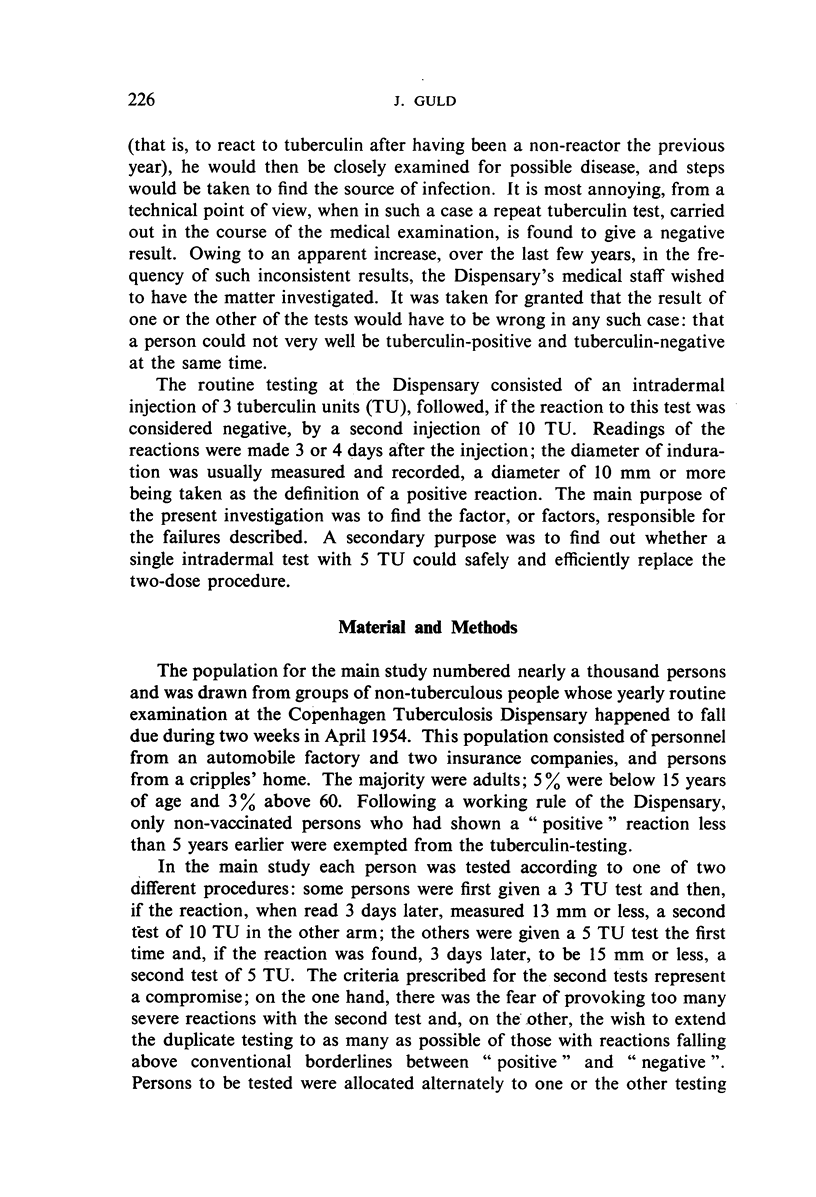


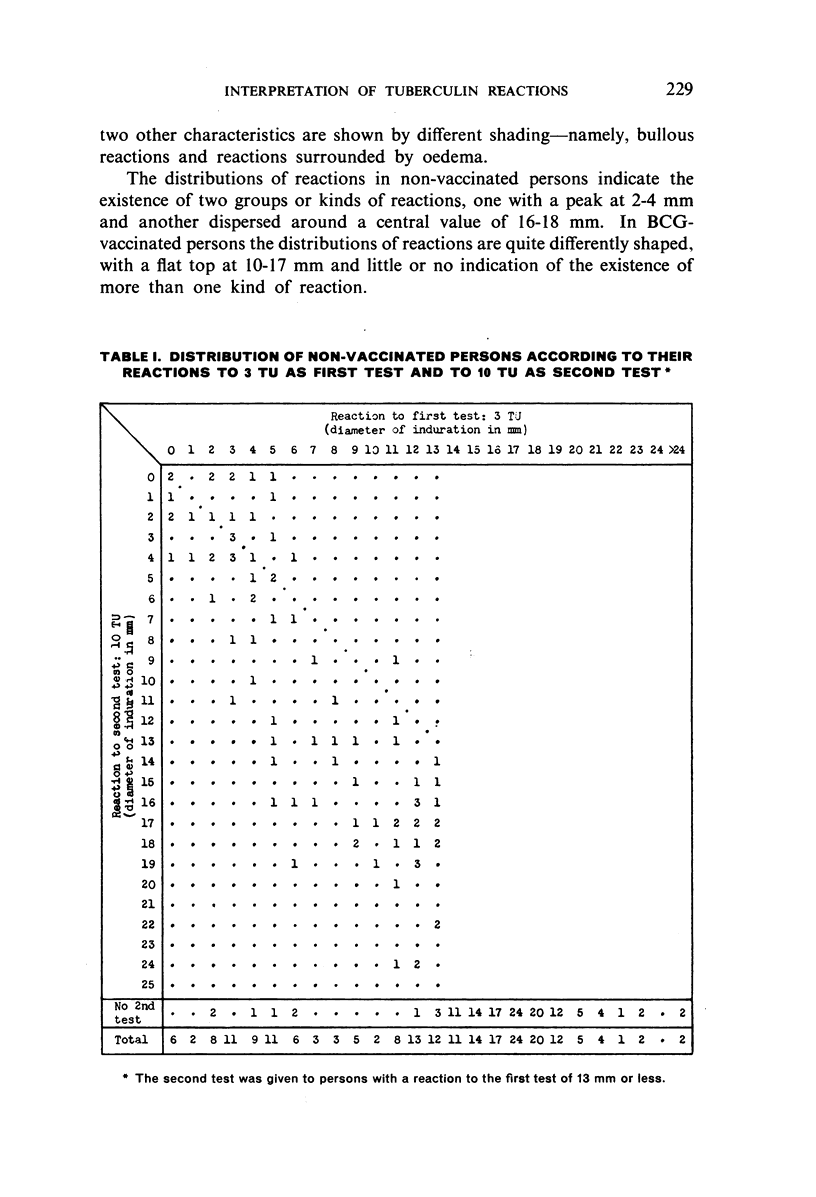

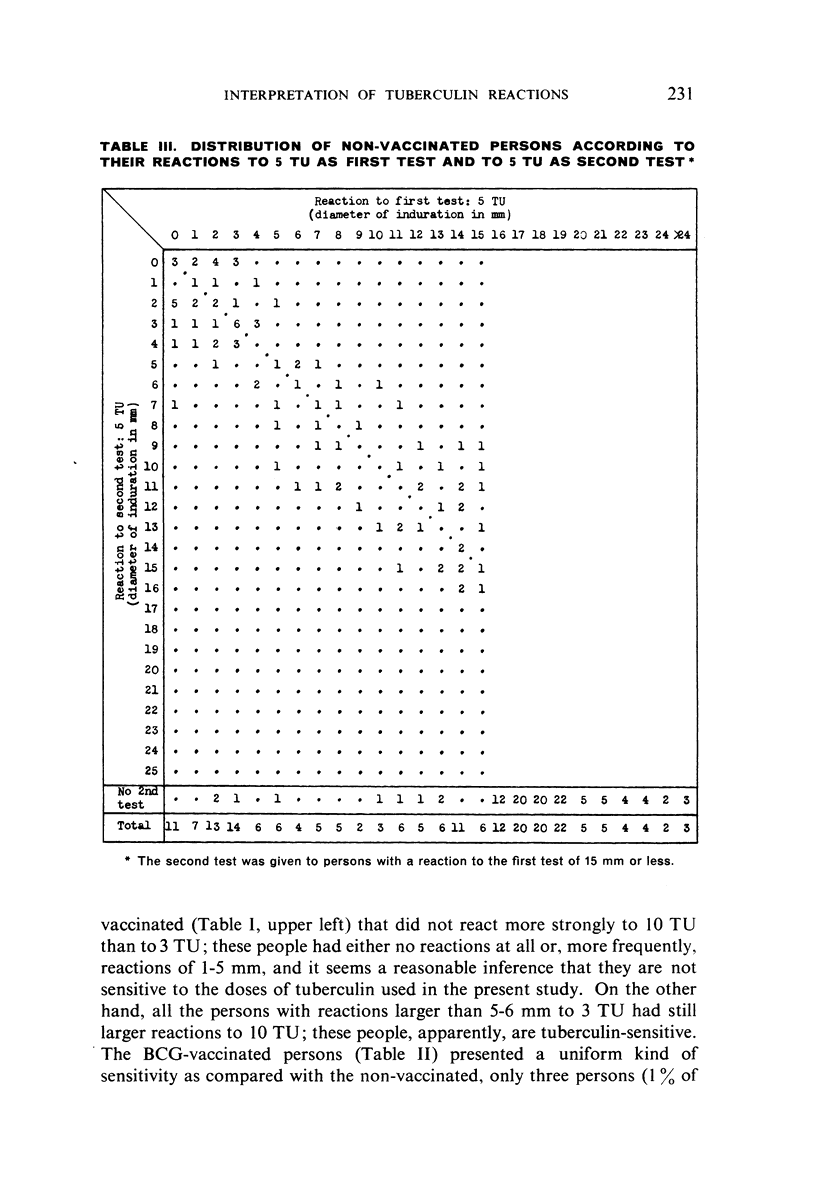


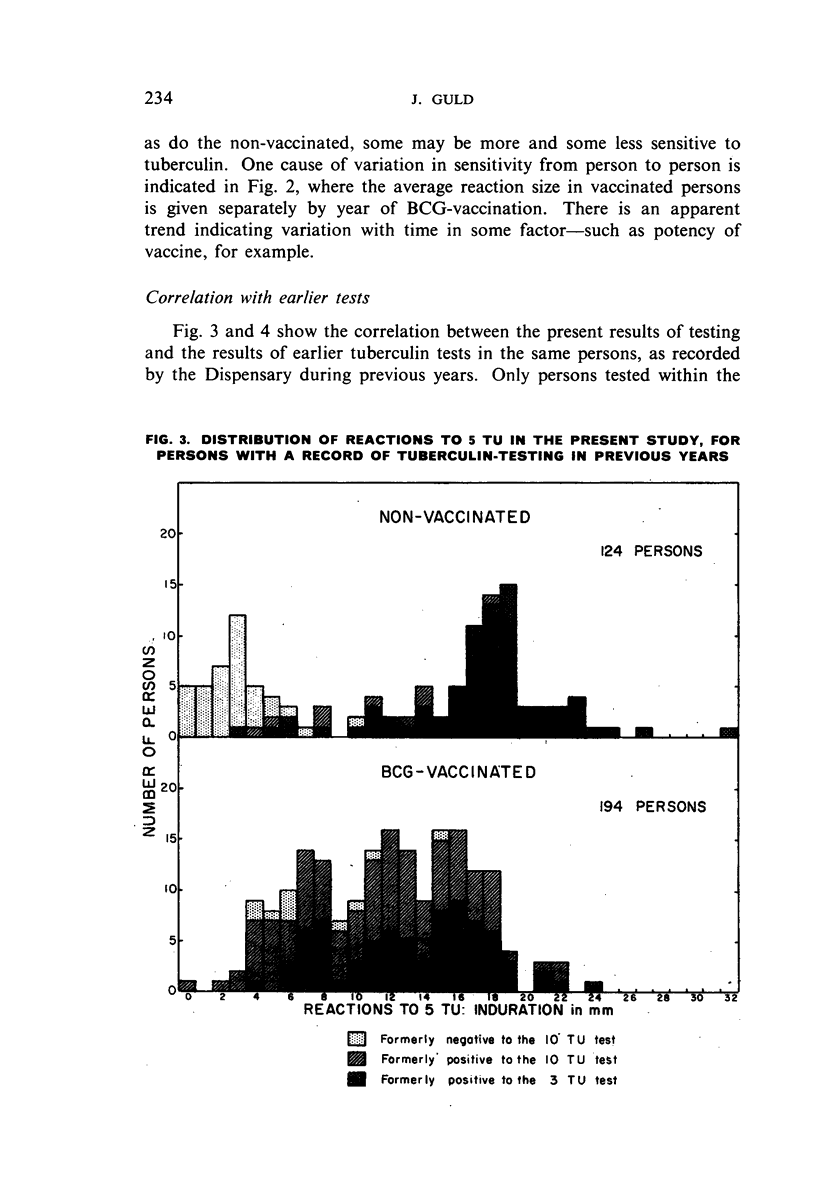
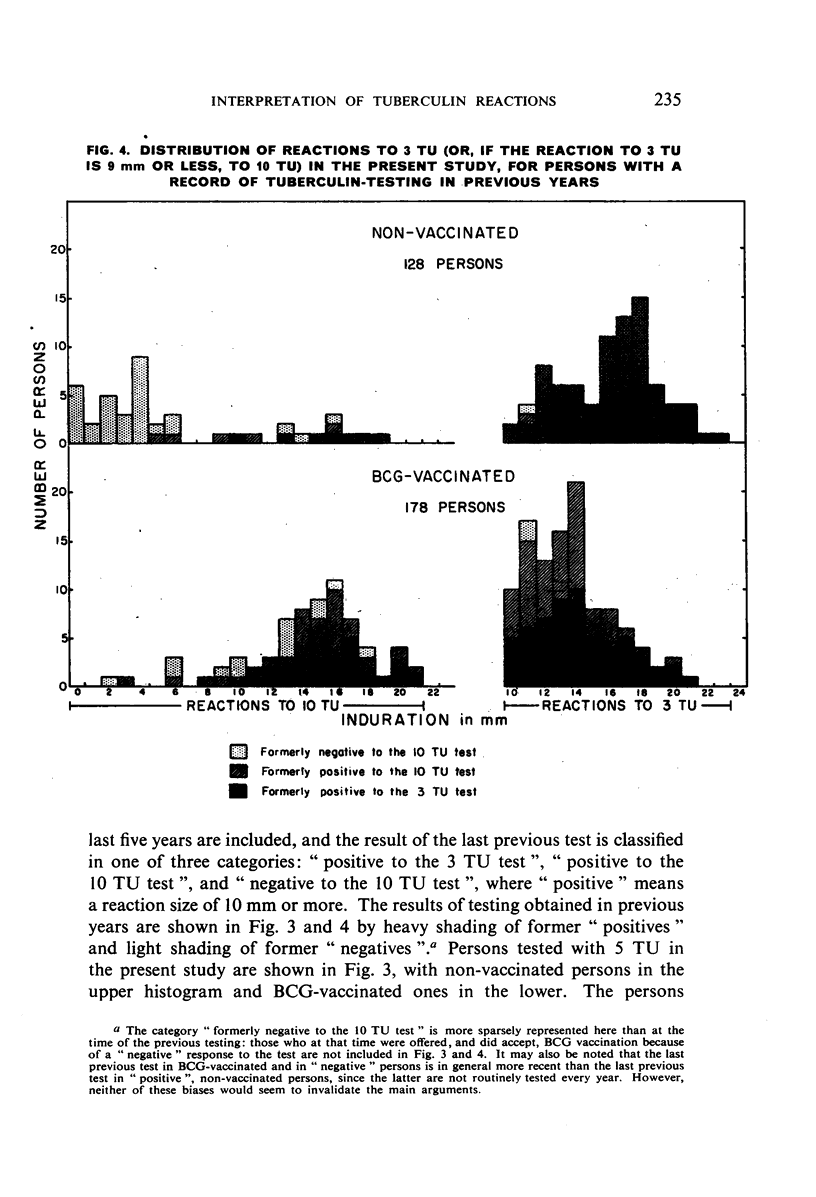
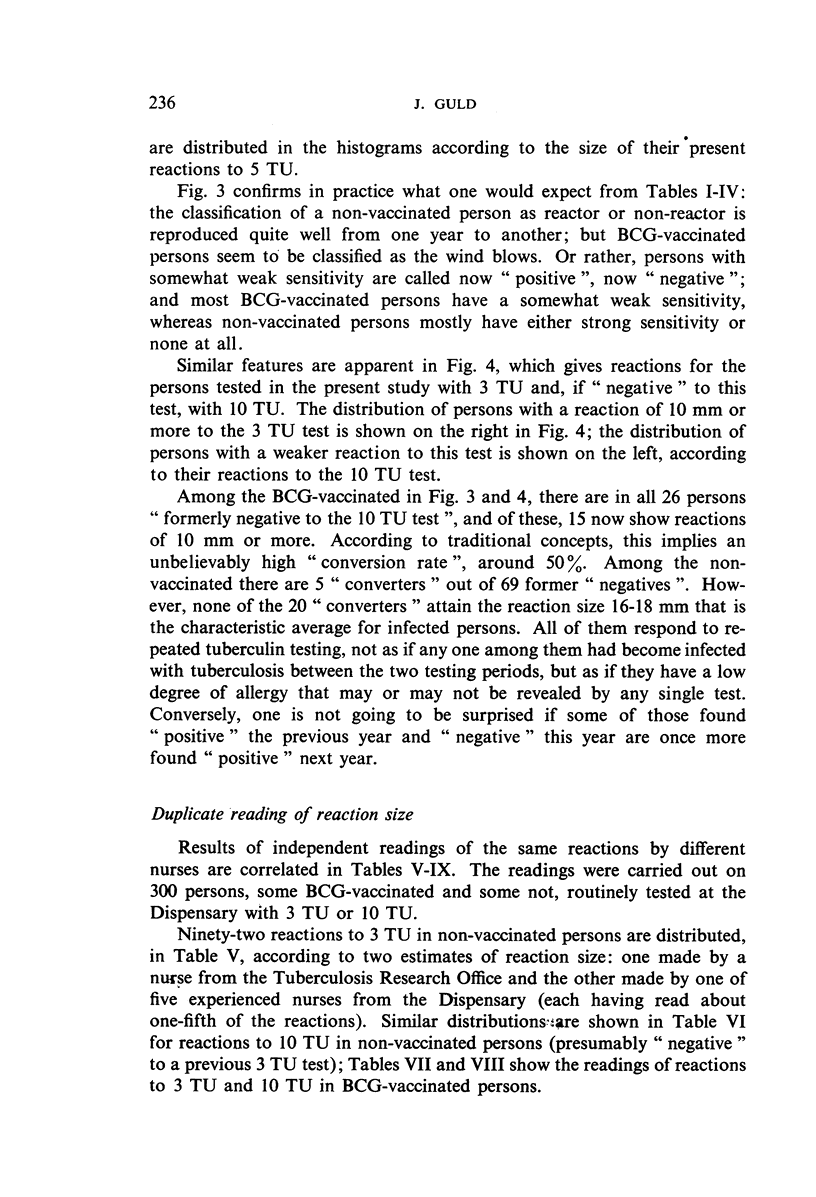
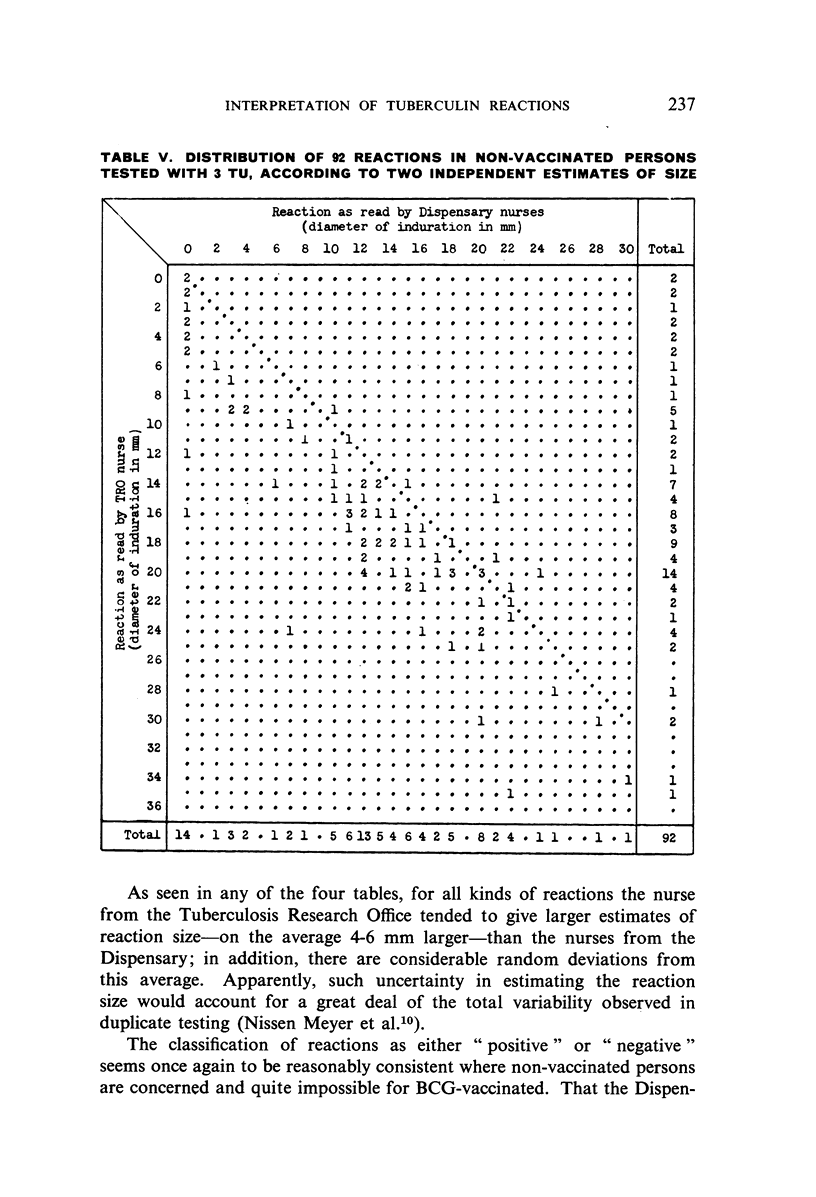


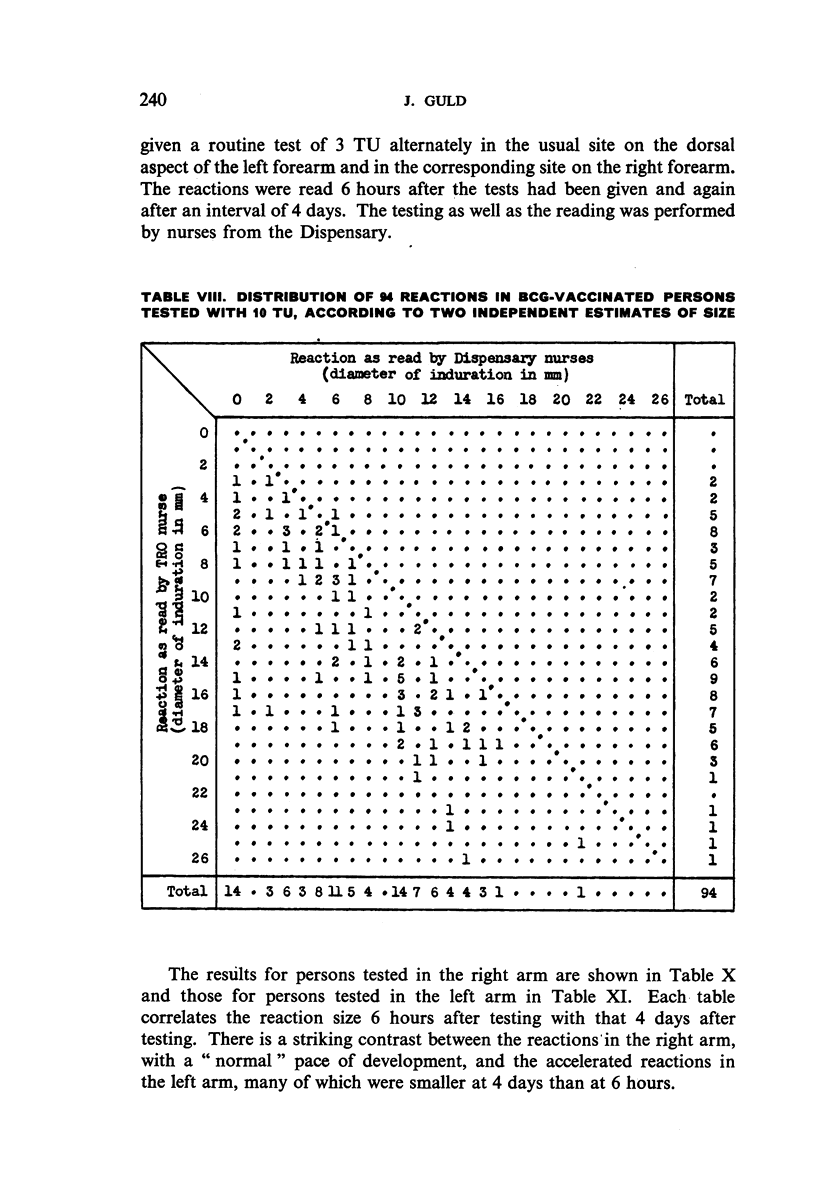
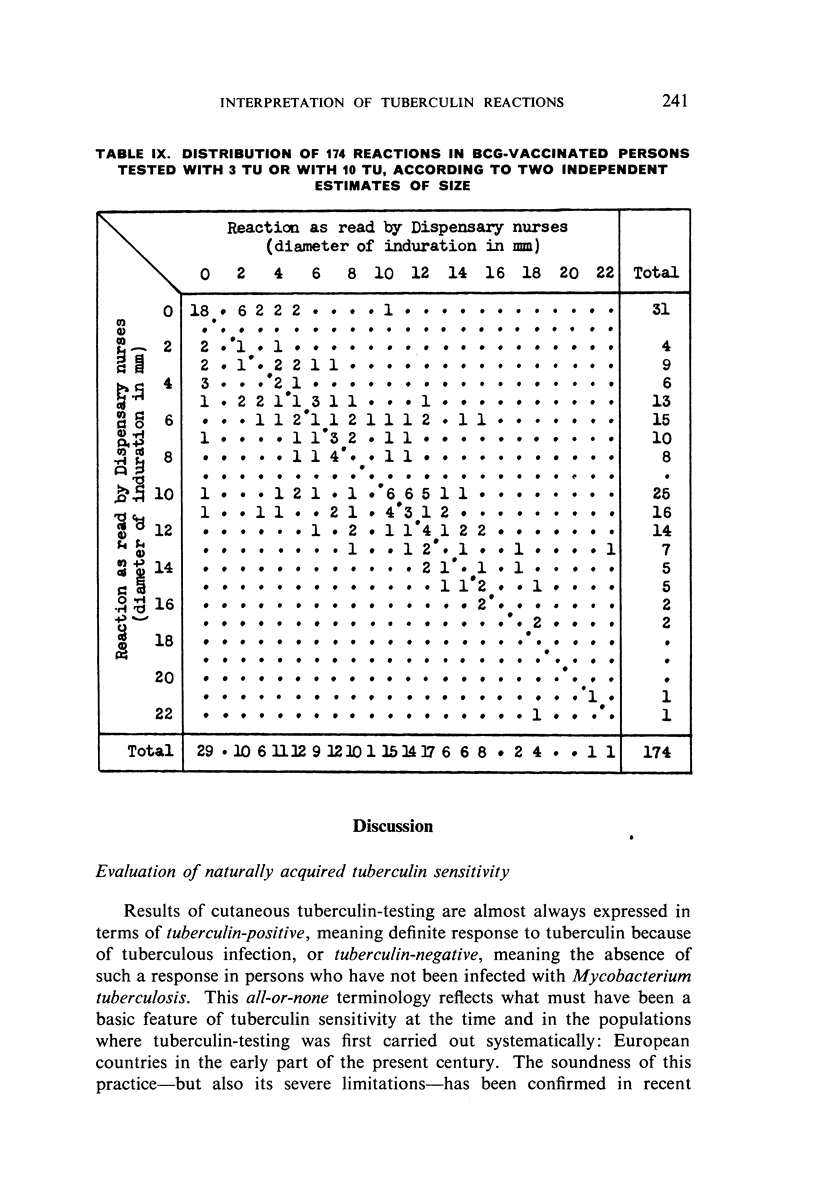
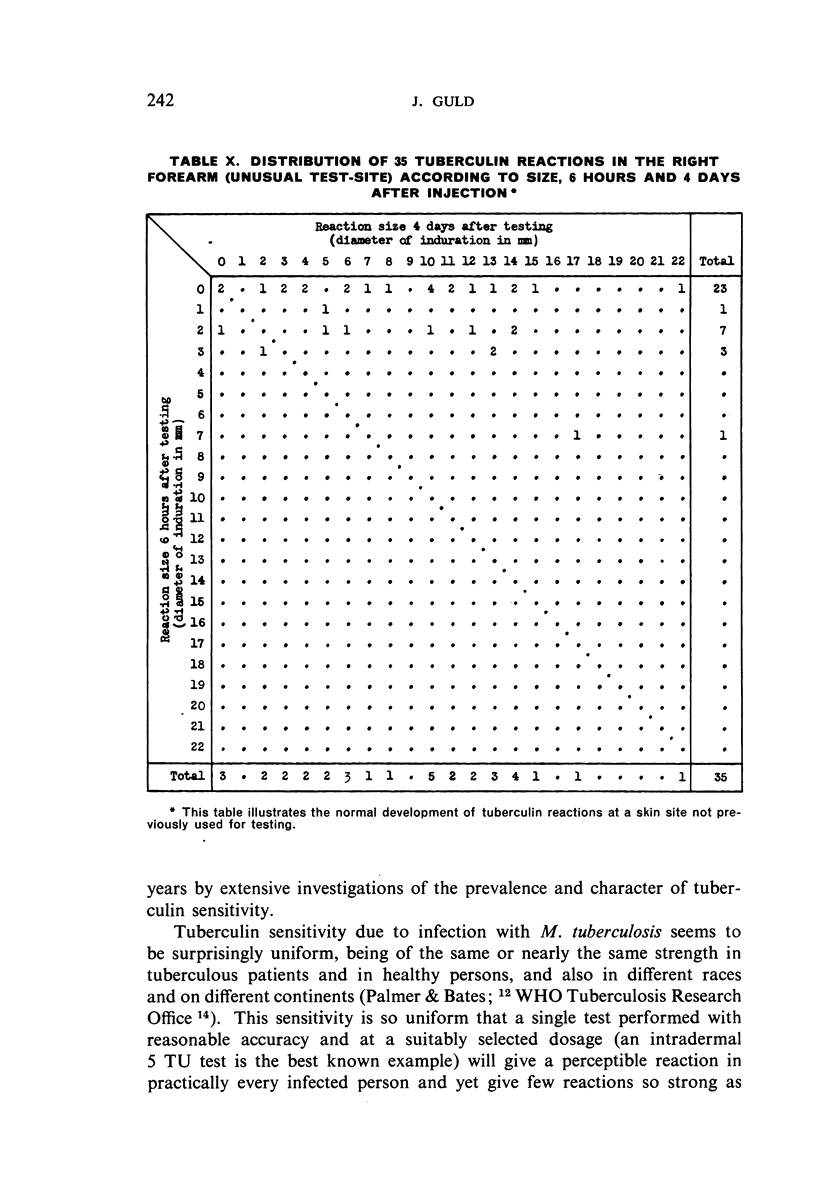
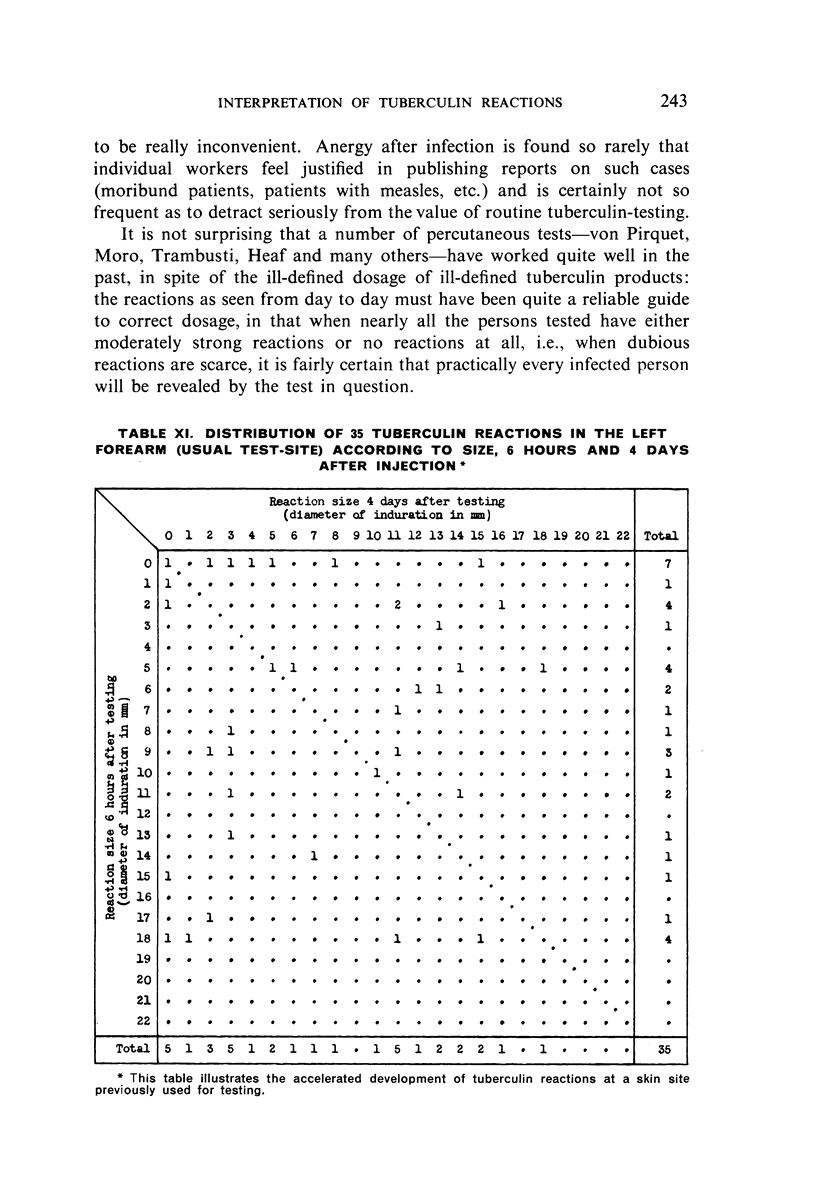
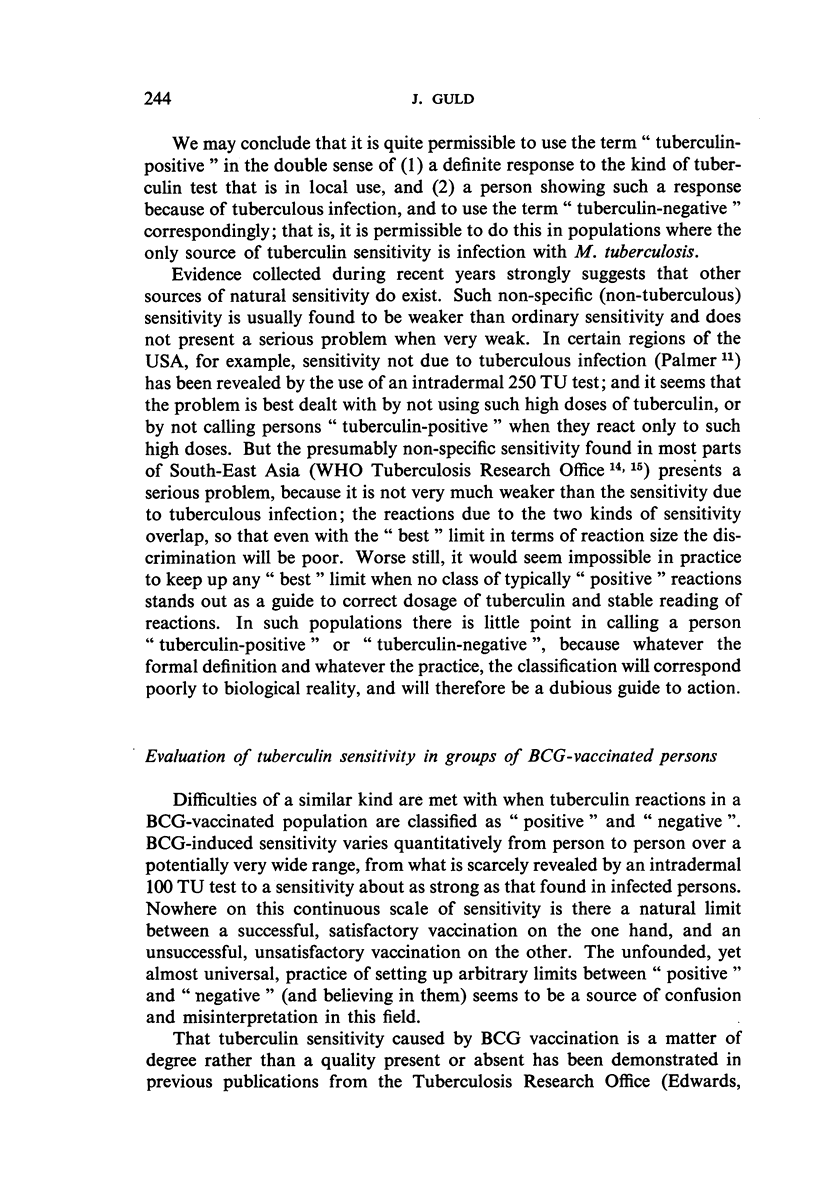


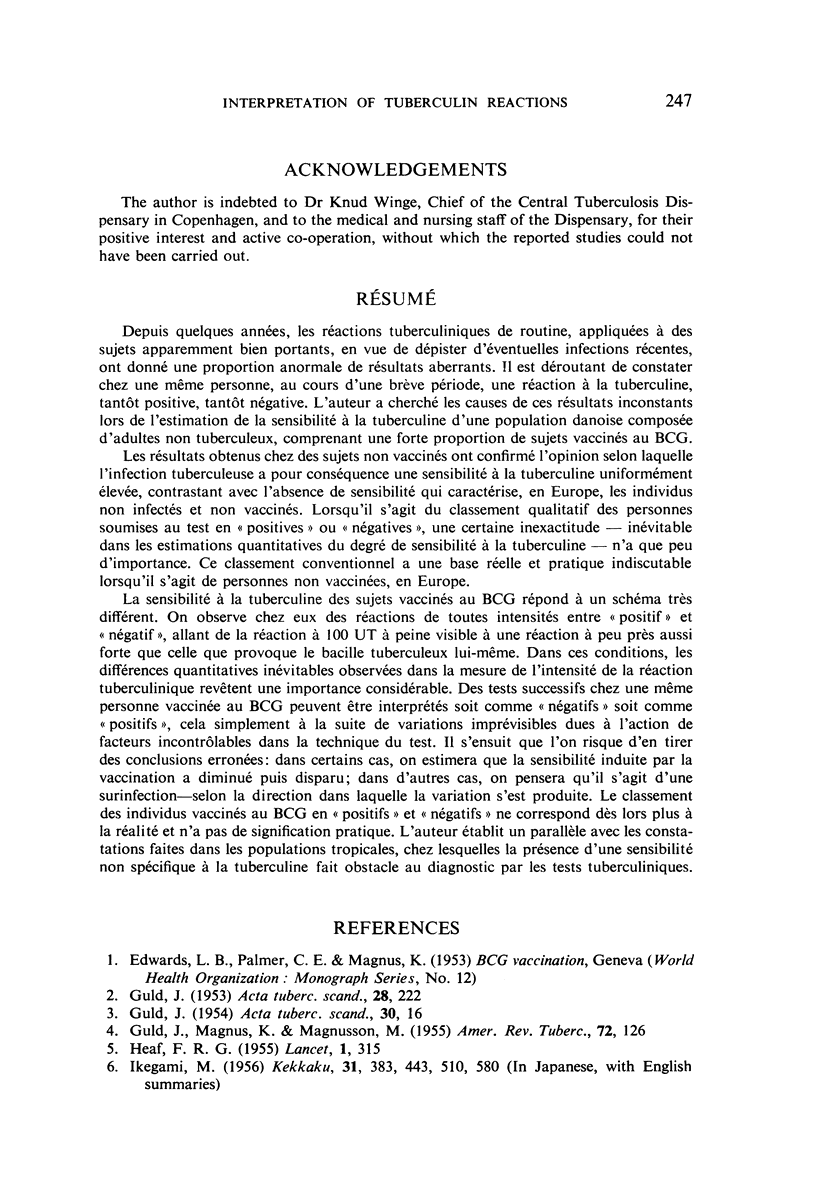

Selected References
These references are in PubMed. This may not be the complete list of references from this article.
- GULD J., MAGNUS K., MAGNUSSON M. Instability of the potency of tuberculin dilutions. Am Rev Tuberc. 1955 Jul;72(1):126–128. doi: 10.1164/artpd.1955.72.1.126. [DOI] [PubMed] [Google Scholar]
- GULD J. Quantitative aspects of the intradermal tuberculin test in humans. I. The dose-response function within the range 1-10 tuberculin units, determined by duplicate tests. Acta Tuberc Scand. 1953;28(3-4):222–245. [PubMed] [Google Scholar]
- GULD J. Quantitative aspects of the intradermal tuberculin test in humans. II. The relative importance of accurate injection technique. Acta Tuberc Scand. 1954;30(1-2):16–36. [PubMed] [Google Scholar]
- HEAF F. R. B.C.G. vaccination. Lancet. 1955 Feb 12;268(6859):315–320. doi: 10.1016/s0140-6736(55)90059-3. [DOI] [PubMed] [Google Scholar]
- MAGNUS K., EDWARDS L. B. The effect of repeated tuberculin testing on post-vaccination allergy; a preliminary note. Lancet. 1955 Sep 24;269(6891):643–644. doi: 10.1016/s0140-6736(55)92482-x. [DOI] [PubMed] [Google Scholar]
- MAGNUS K., GULD J., WAALER H., MAGNUSSON M. Instability of the potency of tuberculin dilutions; a second report. Am Rev Tuberc. 1956 Aug;74(2 Pt 1):297–303. doi: 10.1164/artpd.1956.74.2-1.297. [DOI] [PubMed] [Google Scholar]
- MEYER S. N., HOUGEN A., EDWARDS P. Experimental error in the determination of tuberculin sensitivity. Public Health Rep. 1951 May 4;66(18):561–569. [PubMed] [Google Scholar]
- PALMER C. E., BATES L. E. Tuberculin sensitivity of tuberculous patients. Bull World Health Organ. 1952;7(2):171–188. [PMC free article] [PubMed] [Google Scholar]
- PALMER C. E. Tuberculin sensitivity and contact with tuberculosis; further evidence of nonspecific sensitivity. Am Rev Tuberc. 1953 Nov;68(5):678–694. doi: 10.1164/art.1953.68.5.678. [DOI] [PubMed] [Google Scholar]


